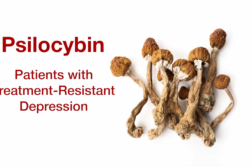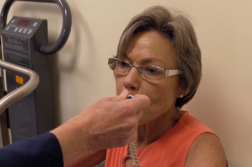PORTLAND, Ore. (Ivanhoe Newswire) — Its symptoms usually come on slowly over a period of years. But the long-term impact of Parkinson’s disease can be devastating. Thinking as well as moving gets much harder as the disease takes hold. However, sweating and moving can actually help slow down the disease.
Eight years ago, Steve Holland didn’t know much about his next opponent. He only knew its name: Parkinson’s disease.
Holland told Ivanhoe, “I knew it stole the ability to walk, balance, speaking. Parkinson’s hits you in so many different ways.”
Holland is among the growing number of patients who are using perspiration as much as prescription drugs to forestall Parkinson’s symptoms.
Fay Horak PhD, PT, a professor of neurology and Parkinson’s researcher at Oregon Health & Science University in Portland, Oregon, detailed, “They know that the more active people are and the more fit they are, the better they can deal with Parkinson’s disease. The higher quality of life they’ll have, the more they’ll be able to move and the more movement they do, the better their symptoms are.”
Even playing piano exercises fine motor movements in the hands and the mind of Parkinson’s patients like Dan Maxwell.
Horak said, “We hope it’s challenging a number of things. We’d like to be challenging balance and gait and challenging cognition at the same time.”
“The cure, whatever that might be, I think will be multi-faceted for one thing, but exercise will be the dominant piece of it,” detailed Maxell.
Holland said, “You feel empowered when you exercise and you get in shape. You’re not letting Parkinson’s happen to you. You’re doing something to fight back and to restore your confidence and your vigor.”
Researchers at Oregon Health & Science University are now studying exactly what areas of the brain share commands for physical as well as cognitive challenges and how keeping that area of the brain active can stall or slow the progression of Parkinson’s disease.
Contributors to this news report include: John Hammarly, Producer; Roque Correa, Editor; Jeff Haney, Videographer.
EXERCISE SLOWS PARKINSON’S
REPORT #2433
BACKGROUND: Parkinson’s disease is a progressive disorder of the nervous system that affects movement. It develops gradually, sometimes starting with a barely noticeable tremor in just one hand. But while a tremor may be the most well-known sign of Parkinson’s disease, the disorder also commonly causes stiffness or slowing of movement. Other symptoms include rigid muscles, impaired posture or balance, loss of automatic movements (such as blinking or swinging your arms when you walk), speech changes, and writing changes. In Parkinson’s disease, certain neurons in the brain gradually break down or die. Many of the symptoms are due to a loss of neurons that produce dopamine. The exact cause of the disease is unknown, but genes and environmental triggers (such as exposure to certain toxins) appear to play a role. Risk factors are being 60 years old or older, having Parkinson’s in your family, and sex; men are more likely to develop the disease than women.
(Source: http://www.mayoclinic.org/diseases-conditions/parkinsons-disease/basics/symptoms/con-20028488)
THE STUDY: Parkinson’s disease cannot be cured, but there are options to help control symptoms. One option is medications that help with walking, movement, and tremors. There is also a surgical procedure called deep-brain stimulation where surgeons implant electrodes into a specific part of the brain that send electrical pulses to the brain which may reduce symptoms. Another option is to exercise. Marilyn Moffat, a physical therapist on the faculty of New York University, says “The earlier people begin exercising after a Parkinson’s diagnosis, and the higher the intensity of exercise they achieve, the better they are,” but unfortunately “no one tells people with Parkinson’s what they could and should be doing unless they get to a physical therapist.” Patients who participate in exercise programs designed to mitigate symptoms and perhaps delay progression of Parkinson’s “can function independently at a higher level, have stronger feelings of well-being, and are happier about their quality of life,” said Dr. Moffat. Among the many exercise options is an agility program that incorporates the principles of tai chi, kayaking, boxing, lunges and Pilates. It was developed and proved safe and effective by Laurie A. King and Fay B. Horak at Oregon Health and Sciences University. In a report on their work in the journal of the American Physical Therapy Association, Dr. King and Dr. Horak explained that intense exercise can improve “plasticity” of the brain, protect against nervous system degeneration, and even reverse motor deficits.
POSSIBLY SLOWING DISEASE PROGRESSION: There is a strong consensus among physicians and physical therapists that improved mobility decreases the risk of falls and some other complications of Parkinson’s. People who exercise vigorously, for example, running or riding a bicycle, have fewer changes in their brains caused by aging. One Parkinson’s Outcomes Project study has proven that people with PD who vigorously exercise for 2.5 hours per week show a slower decline in quality of life, and the sooner they begin vigorous workouts after diagnosis, the better.
* For More Information, Contact:
Erik Robinson Fay Horak
robineri@ohsu.edu horakf@ohsu.edu
503-494-7986 503-418-2602
Free weekly e-mail on Medical Breakthroughs from Ivanhoe. To sign up: http://www.ivanhoe.com/ftk



